Asteroid 2012 BX34
Near-Earth asteroid 2012 BX34
Once again, we did not see the danger coming.
Only an amateur was able to photograph the asteroid 2012 BX34. Yet this near-Earth asteroid had a size of 8-18 meters and came within 76 800 km from Earth, January 27, 2012.
This distance is extremely thin compared to the distances of the solar system.
We have avoided the collision with the asteroid in the day on Friday, January 27, 2012 to 16H, a distance of 0.2 times that of the moon, if one believes NASA page on the near-Earth object (NEO).
Many small rocky bodies called asteroids are present in the solar system, a significant portion of them circulate in a ring between the orbits of Mars and Jupiter between 2 and 4 AU (Symbol: UA) The mean distance from Earth to the Sun. a AU is 149,597,871 km. It is a unit often used for distances in the solar system, or the distance between two stars in a dual system. , in what astronomers call the belt asteroid, also known as main Belt.
It marks the boundary between the terrestrial planets and gas giants. An asteroid is a celestial object is not observable to the naked eye because of its small size, which varies from a few tens of meters to several hundred kilometers in diameter and is part of our solar system.
The objects of less than 50 m in diameter are called meteorites. The size of the object was not enough to do damage to our planet, especially since it probably would not reach the earth's surface, over, he would have fragmented and even sublime.
Let us remember that it is enough of an object 50 meters to make a crater like the famous Meteor Crater in Arizona.
This meteorite, would have produced the same effects as in the fall of the Sikhote-Alin meteorite in 1947. It was fragmented in the atmosphere.
As the astronomer said Gareth Williams of the Minor Planet Center. BX34 2012 is among the 20 NEO who approached most of the Earth since the early observations.
The most worrying from the astronomer is that the future path of the object BX34-2012 is uncertain and hoped it was picked up by radar, which would analyze its orbital elements accurately to calculate the future orbit.
| Name | Size | Discovered |
| Ceres | 959 km | 1801 |
| Pallas | 526 km | 1802 |
| Vesta | 510 km | 1807 |
| Hygiea | 408 km | 1849 |
| Davida | 328 km | 1903 |
| Interamnia | 316 km | 1910 |
| Europe | 302 km | 1858 |
| Junon | 268 km | 1804 |
| Sylvia | 260 km | 1866 |
| Eunomia | 256 km | 1851 |
| Euphrosyne | 256 km | 1854 |
| Psyche | 254 km | 1852 |
| Cybele | 240 km | 1861 |
| Bamberga | 230 km | 1892 |
| Patientia | 226 km | 1899 |
Image: The largest known asteroids (above).
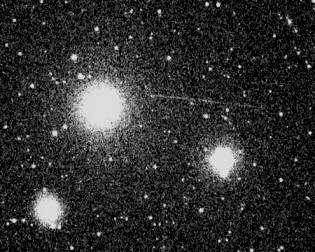
Image: The small signal of the object 2012 BX34 was photographed by an amateur astronomer as a low luminous line.
© Ernesto Guido-Giovanni Sostero-Nick Howes
NB: The Lincoln Near-Earth Asteroid Research (LINEAR) is a joint research project of the Air Force, NASA and MIT Lincoln Laboratory. LINEAR robotic telescopes have detected the September 15, 2011, 231,082 asteroids, 2,423 NEO discoveries and 279 comets.
 The Asteroid Bennu: A Rotating Rubble Pile
The Asteroid Bennu: A Rotating Rubble Pile  Yarkovsky Effect on Asteroids
Yarkovsky Effect on Asteroids 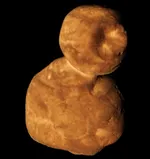 Arrokoth, the
red snowman
Arrokoth, the
red snowman 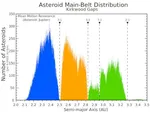 The Kirkwood Gaps in the Main Asteroid Belt
The Kirkwood Gaps in the Main Asteroid Belt 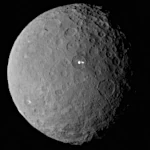 What is the asteroid belt?
What is the asteroid belt?  The Great Comet of 1577 Shattered the Crystal Spheres
The Great Comet of 1577 Shattered the Crystal Spheres 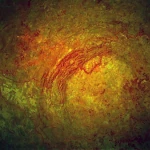 The Invisible Threat of Asteroids: From Pebbles to Flying Mountains
The Invisible Threat of Asteroids: From Pebbles to Flying Mountains  Meteorites: Messengers from Space and Witnesses of the Solar System
Meteorites: Messengers from Space and Witnesses of the Solar System 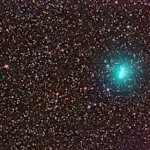 Comet Hartley 2: The Icy Heart Scrutinized by Deep Impact
Comet Hartley 2: The Icy Heart Scrutinized by Deep Impact 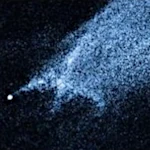 When Two Asteroids Collide: The Strange Case of P/2010 A2
When Two Asteroids Collide: The Strange Case of P/2010 A2 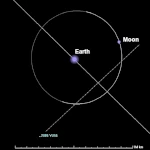 2005 YU55: The 400 m Asteroid that Grazed Earth
2005 YU55: The 400 m Asteroid that Grazed Earth  Asteroid Apophis: The Perfect Candidate for a Global Impact?
Asteroid Apophis: The Perfect Candidate for a Global Impact? 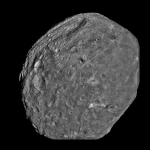 Vesta: The Colossus of the Asteroid Belt
Vesta: The Colossus of the Asteroid Belt 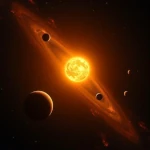 From Asteroids to Planets
From Asteroids to Planets
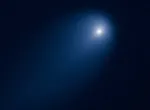 2012 and Comet ISON: Between Promise of Brilliance and Disappointment
2012 and Comet ISON: Between Promise of Brilliance and Disappointment 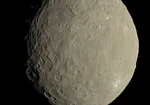 Giants of the Asteroid Belt: Classification by Size
Giants of the Asteroid Belt: Classification by Size 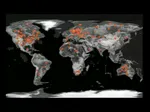 Impact
craters on Earth
Impact
craters on Earth  Online Simulator: Orbits of Asteroids
Online Simulator: Orbits of Asteroids  Online Simulator: Orbits of Near-Earth Asteroids
Online Simulator: Orbits of Near-Earth Asteroids  Rosetta has a date with a comet
Rosetta has a date with a comet  Near-Earth Asteroids: An Underestimated Threat to Our Planet?
Near-Earth Asteroids: An Underestimated Threat to Our Planet?  Asteroid 2009 DD45: A Reminder of Planetary Vulnerability to Asteroids
Asteroid 2009 DD45: A Reminder of Planetary Vulnerability to Asteroids 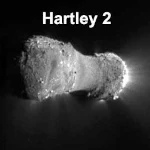 Strange Resemblance Between Comet Hartley 2 and Asteroid Itokawa
Strange Resemblance Between Comet Hartley 2 and Asteroid Itokawa 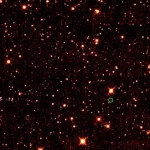 Earth's Trojan Asteroids: Companions Sharing Our Orbit
Earth's Trojan Asteroids: Companions Sharing Our Orbit 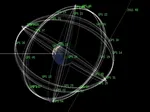 Turin Scale: A Classification of Impact Risks
Turin Scale: A Classification of Impact Risks  The Nice Model: Towards an Explanation of the Late Heavy Bombardment
The Nice Model: Towards an Explanation of the Late Heavy Bombardment 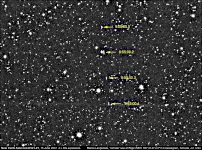 NEO Monitoring: The Case of Asteroid 2012 LZ1
NEO Monitoring: The Case of Asteroid 2012 LZ1  Comet Lemmon (C/2012 F6): The Southern Hemisphere's Green Visitor
Comet Lemmon (C/2012 F6): The Southern Hemisphere's Green Visitor 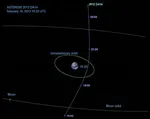 Asteroid 2012 DA14 passed on February 15, 2013
Asteroid 2012 DA14 passed on February 15, 2013 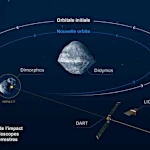 Planetary defense with Didymos and Dimorphos
Planetary defense with Didymos and Dimorphos 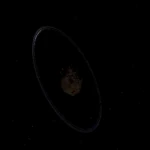 Chariklo and its rings: a surprising centaur asteroid
Chariklo and its rings: a surprising centaur asteroid 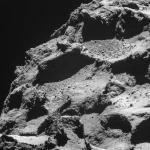 Rosetta and Philae: A Feat 500 Million Kilometers from Earth
Rosetta and Philae: A Feat 500 Million Kilometers from Earth  The Passage of Comets: Eccentric Orbits at the Heart of the Solar System
The Passage of Comets: Eccentric Orbits at the Heart of the Solar System 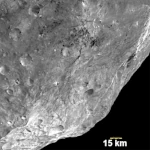 Vesta and its Curiosities: The Enigma of the Torn South Pole
Vesta and its Curiosities: The Enigma of the Torn South Pole 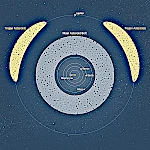 Meeting the Asteroids: The Main Belt
Meeting the Asteroids: The Main Belt 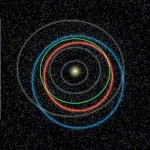 Orbits of Near-Earth Asteroids: When Asteroids Brush Past Earth
Orbits of Near-Earth Asteroids: When Asteroids Brush Past Earth 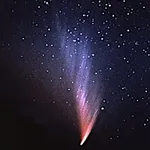 Wandering
comets
Wandering
comets 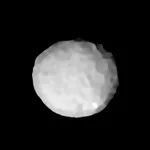 Asteroid Pallas: A Giant of the Main Belt
Asteroid Pallas: A Giant of the Main Belt 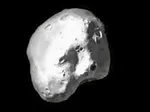 Asteroid Juno: an unknown giant of the solar system
Asteroid Juno: an unknown giant of the solar system 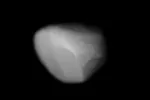 Ganymed (1036): Near-Earth and Mars-crosser
Ganymed (1036): Near-Earth and Mars-crosser 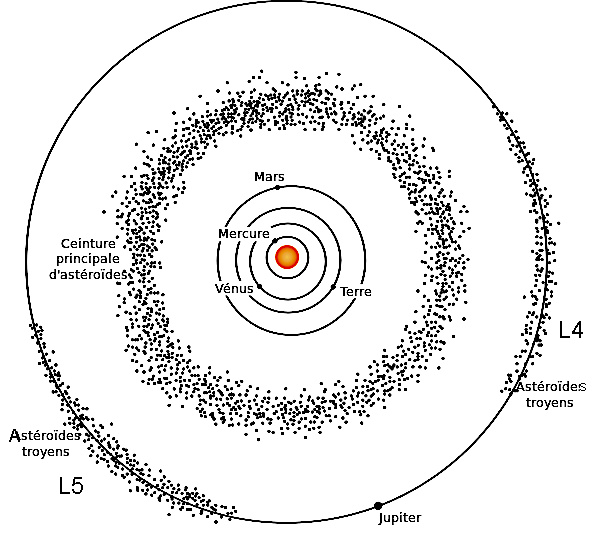 Are there natural satellites of natural satellites?
Are there natural satellites of natural satellites?  Earth's quasi-satellite: 2016 HO3
Earth's quasi-satellite: 2016 HO3